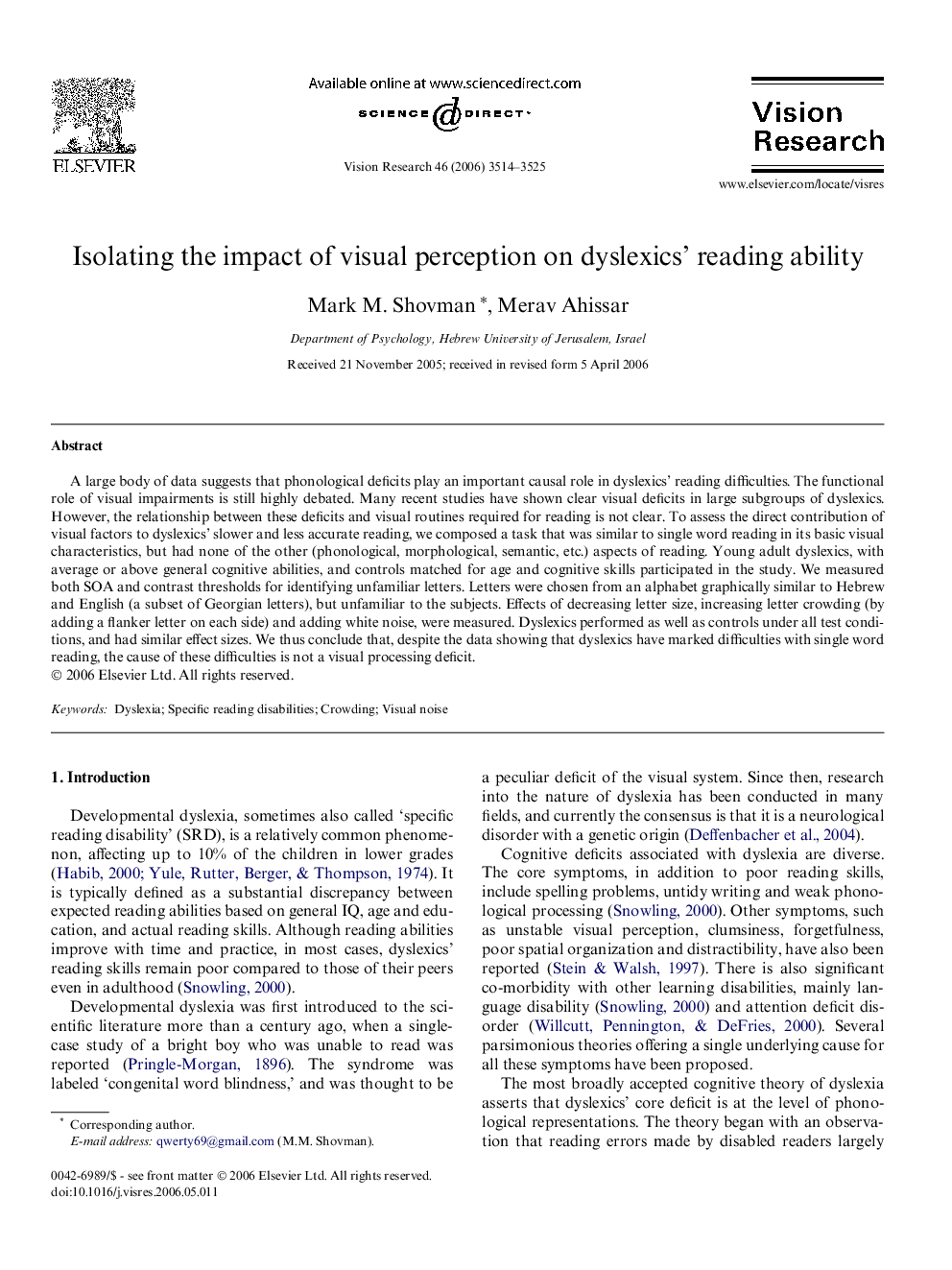| Article ID | Journal | Published Year | Pages | File Type |
|---|---|---|---|---|
| 4035997 | Vision Research | 2006 | 12 Pages |
A large body of data suggests that phonological deficits play an important causal role in dyslexics’ reading difficulties. The functional role of visual impairments is still highly debated. Many recent studies have shown clear visual deficits in large subgroups of dyslexics. However, the relationship between these deficits and visual routines required for reading is not clear. To assess the direct contribution of visual factors to dyslexics’ slower and less accurate reading, we composed a task that was similar to single word reading in its basic visual characteristics, but had none of the other (phonological, morphological, semantic, etc.) aspects of reading. Young adult dyslexics, with average or above general cognitive abilities, and controls matched for age and cognitive skills participated in the study. We measured both SOA and contrast thresholds for identifying unfamiliar letters. Letters were chosen from an alphabet graphically similar to Hebrew and English (a subset of Georgian letters), but unfamiliar to the subjects. Effects of decreasing letter size, increasing letter crowding (by adding a flanker letter on each side) and adding white noise, were measured. Dyslexics performed as well as controls under all test conditions, and had similar effect sizes. We thus conclude that, despite the data showing that dyslexics have marked difficulties with single word reading, the cause of these difficulties is not a visual processing deficit.
